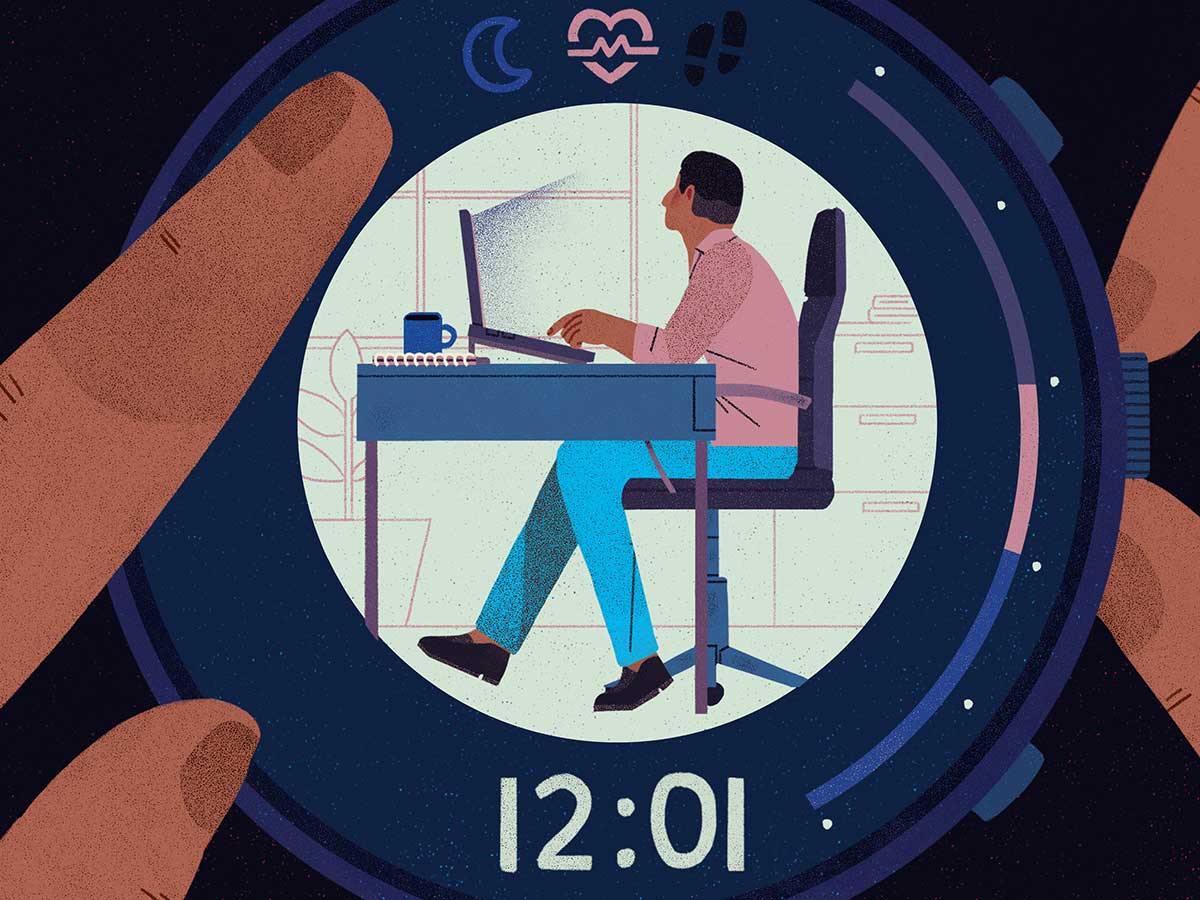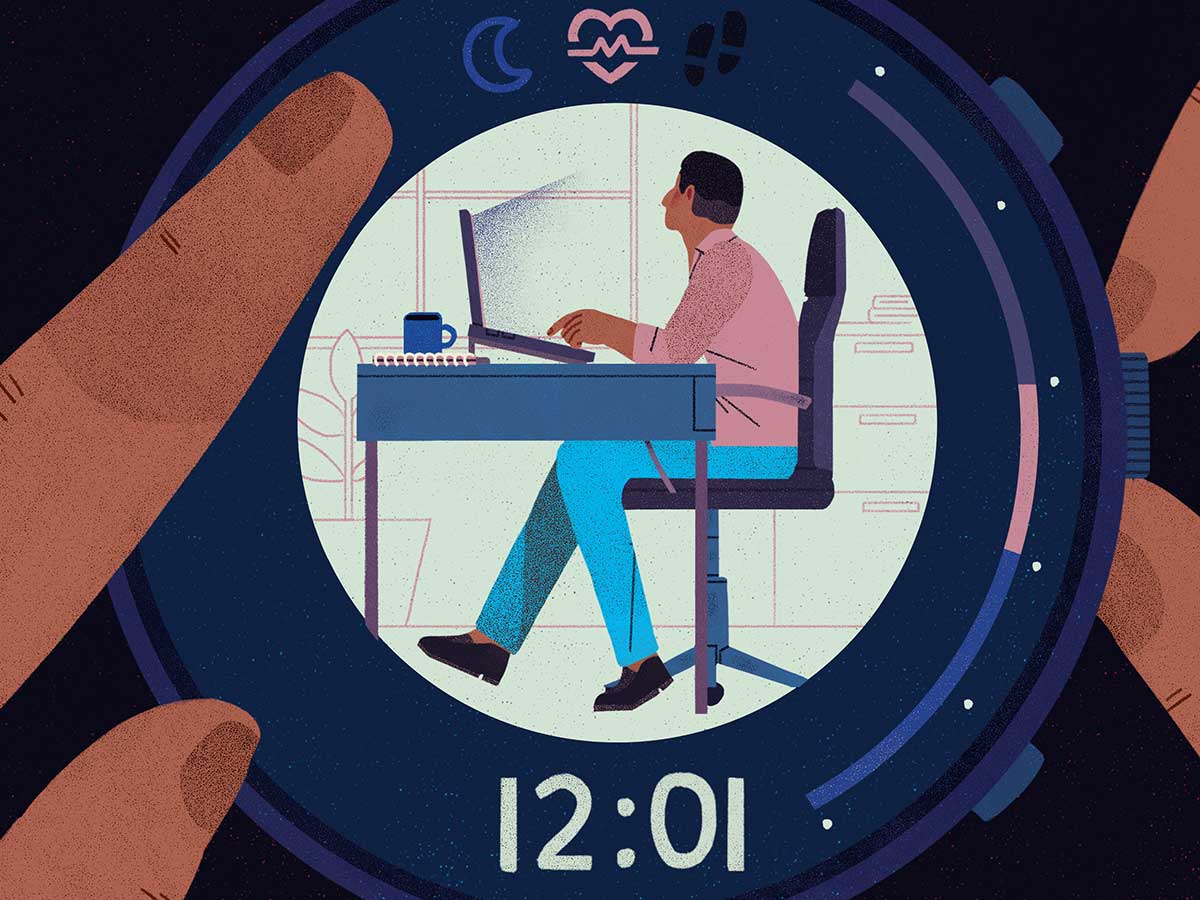
How wearable fitness trackers are helping employers save money
 According to Fitbit, more than three-quarters of organizations have said their wellness programs have been effective in improving health outcomes (Illustration by Jeannie Phan)
According to Fitbit, more than three-quarters of organizations have said their wellness programs have been effective in improving health outcomes (Illustration by Jeannie Phan)
Promoting health and wellness in the workplace isn’t just an investment in employees—it can be lucrative for your business.
Having healthy, active employees minimizes both absenteeism and presenteeism—employees who are present in the workplace but unable to carry out their tasks. One U.S. study found employees who participated in a health promotion program and improved their health care or lifestyle regained an average of 10.3 hours in additional productivity annually and saved their companies an average of US$353 per person per year in productivity costs compared to non-participants.
“Encouraging employees to do a little more physical activity around the clock also prevents injuries in the workplace,” said said Eric Lalonde, VP of sales and marketing for Sprout, a Canadian company that developed an engagement platform for corporate wellness that allows employers to integrate with activity-tracking devices.
“We have a client that demonstrated that time and again. They went on to save $2.5 million on premiums over five years.”
TRACKING YOUR PROGRESS
According to Fitbit, one of the leaders in activity-tracking products, more than three-quarters (77 per cent) of organizations have said their wellness programs have been effective in improving health outcomes.
And with a wave of new technology that can track not only your steps, but heart rate, sleep and even sun exposure, companies have the tools to create wellness programs that open a brand new line of interaction.
While many companies have some kind of corporate wellness strategy, wearable tracking devices allow a whole new level of engagement from both employees and employers. But without a fully-integrated plan, wellness strategies can often amount to just checking off a box.
“The latest stats we saw is that 80 per cent of companies don’t track the results of whatever wellness strategy they have,” Lalonde said. Sprout’s wellness portal allows employers to not only bring together their health and wellness programming in one location, but connects them to the workforce while gaining valuable data.
“It will make recommendations on areas that you’re at risk,” he says. “If on average you’re walking 6,000 steps a day, this smart tool will challenge you to increase that to say 7,500.
“The idea is that over time, you change those bad habits into good ones—which are going to translate to better health outcomes for yourself, but also dollar savings to the employer.”
Lalonde says organizations work with them for a variety of reasons, including a push towards changing the culture. But the well-integrated ones have come to realize that happier, healthier employees lead to better outcomes as a business, reaping the benefits of employee retention, preventing absenteeism and lowering the risk of injuries in the workplace.
LOSING SLEEP OVER THE ECONOMIC COSTS?
According to a report from the RAND Corporation, insufficient sleep costs the Canadian economy as much as $21.4 billion a year. Even small changes to sleep duration could have big impacts—the report estimates that if those individuals who sleep less than six hours a night begin to sleep six to seven hours a night instead, it could add $12 billion to our economy.
The impacts of poor sleep on an organization are just as staggering. A study from Desjardins Insurance says a person with symptoms of insomnia costs 3.3 times more in direct and indirect costs. More than 95 per cent of these costs are absorbed by the organization, since they are related to absenteeism and presenteeism.
At Sprout, sleep challenges can be another aspect of the wellness portal. At the moment, the user manually logs their sleep data, but Lalonde says that one day that too will be integrated with your smart wearable device.
USING DATA RESPONSIBLY
As companies collect enormous amounts of information on employees, organizations need to make it very clear how this data is being used, says David Zweig, associate professor of Organizational Behaviour and HR Management at the University of Toronto-Scarborough.
“Everyone’s getting excited about analytics,” Zweig says. “But I think employees need to ask what this data will and will not be used for. How do I know this information isn’t going to be used to make organizational decisions as to whether I should be promoted?”
Zweig, whose current research includes workplace privacy, says the onus is on the organization to establish trust with employees—and assure them that this information won’t be used in ways it wasn’t intended.
“What are the consequences if I participate and what are they if I don’t?” asks Zweig. “If the data shows that I don’t engage in a lot of activity, or if you find out I’m not sleeping particularly well, is that going to influence any decisions you make about my career?”
With a new wave of biometric technology coming—including sweat-tracking wearables —Zweig says we need to be asking more questions. “Is this [information] relevant to employee performance?”
FOR MORE ON PRIVACY
Educate employees about privacy with the Canadian privacy and data security toolkit, designed to guide business professionals and business owners in addressing privacy and data security issues within their organizations.